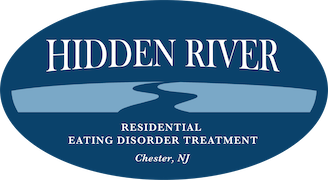A Deep Dive Into Our Admissions Process: Part Two
For today’s blog post, we’re thrilled to continue our conversation with Jennifer Vargas, Director of Business Development and Admissions, and Krista Postal, Admissions Coordinator, about Hidden’s River unique admissions process.
Keep reading to learn more about Hidden River’s admissions process, including the steps, timeline, and frequently asked questions.
Let’s get started! Jenn, can you walk us through the steps of the admissions process?
The first step varies depending on how they hear about our program. In one instance, the outreach or business development reps will be in contact with a provider — whether it be an outpatient team, PHP, IOP, an inpatient program, or another residential center for a lateral transfer. The outreach rep will gather that information and hand it over to Krista to continue the admissions paperwork.
The other way would be contacting Krista, either through her direct line, our general admissions number, or our general admissions email address. We also have a web inquiry portal that people can fill out with their contact information, insurance details, demographics, and a quick description of what’s going on. That goes directly to our team, so either Krista or I follow-up with them.
The next step would be for Krista to get any preliminary information from them (if they didn’t complete the web inquiry form in the portal). Krista then submits those details to our insurance team for review. They run the benefits and get back to us, usually within a few hours. Once we receive all of their benefits, Krista follows up with them right away to go over the details and let them know again what the financial picture will look like.
At that point, Krista offers to schedule their phone intake assessment. I also do in-person intake assessments if they want to come in and take a tour of the facility. Or they could do the intake assessment over the phone and then complete the tour with Lynn Corey, MSW, LCSW, CEDS-S, CETP, our Clinical Director, or one of our therapists.
What happens once the intake assessment and tour is completed?
Jenn: From there, they are presented with a number of documents that need to be completed. There is a medical clearance form that needs to be filled out by either an urgent care doctor, a primary care physician, or their current treatment facility. There’s also a set of lab work, including an EKG. Plus, there’s a release of information form that allows us to speak to their current providers and gather more clinical information that’s pertinent for the determination of level of care.
So once we get that packet completed, Krista and I review it together and then share it with our team, including our Executive Director and two psychiatrists. They will discuss amongst themselves if Hidden River is a good fit for the individual.
They typically get back to Krista within an hour with their determination. If they decide it’s a good fit, then Krista speaks to the family to schedule a date of admission and then submits for authorization for insurance. In some cases, Hidden River isn’t the right choice. When this happens, Krista connects with me again, and our outreach team comes up with at least three referrals and resources to send to the family so they’re never left hanging. If we’re not a good fit — and we don’t claim to be for every single person – we will always make sure that they are given other programs that we feel would be a better fit for them. We also keep that line of communication open just in case those numbers or referrals don’t work out. We can always give them more.
Once the admission date is set, the team gets ready for their arrival!
How does your team determine if Hidden River is the right fit for a potential client?
Krista: That is determined by a couple of factors. First, we want to make sure that they meet the criteria for our program. Are they 20 years of age or younger? Are they biologically female? Can we take their insurance? Those are some of the initial questions just to see if we can take them on as a client.
From there, the clinical assessment that we talked about would definitely let us know if they meet the clinical criteria for our program. Is their eating disorder the primary concern, or is another diagnosis the primary focus? We may need to refer them to a mental health program that’s not specific to eating disorders, even though we are able to work with dual diagnoses.
Also related to the medical piece, we want to make sure that they’re appropriate to be in a residential setting and not needing a hospital at that time. We just want to make sure that they’re both clinically and medically appropriate for our care.
Now, let’s go through some of your most commonly asked questions during the admissions process.
First, many parents are concerned about their child falling behind in school during residential treatment. How do you incorporate your patients’ education into your program?
Krista: A lot of families put off treatment because they don’t want their child to get behind in school. The good thing is, we do provide a school component so parents don’t have to wait for the school year to be over to get their child support. We have a teacher on staff Monday through Friday who is able to help support our patients in their classes. They also serve as a liaison between the school and the patient’s coursework so they’re not getting behind in their studies.
Specifically, for adolescents and teens in high school, we have two hours a day for schooling. For college students, it’s one hour a day. Then, there is downtime in the evening where they have additional time. If it’s clinically appropriate for them, they can work on coursework and any remaining homework.
What are the weekend outings like?
Jenn: Weekend outings at Hidden River are really great! We have a list of approved outings that are clinically-approved. Then, the patients get to vote and decide what outing they want to do that week. Some examples include an alpaca farm, apple picking, or a pumpkin patch. There have also been times where we take them to the movie theater to complete a snack challenge. These weekly outings are really fun but also play into some of their treatment plan goals.
How does insurance come into play for residential eating disorder treatment?
Jenn: Since we are in-network now with all of the Blue Cross Blue Shield policies, we can get patients admitted more quickly as long as they’re medically and clinically appropriate for residential care. Even before doing the intake assessment, though, Krista will do an insurance verification of benefits check. We’ll lay out the financial responsibilities, just so that the families are aware and know whatever financial responsibilities they may have. We want to help them develop a plan A and plan B.
If we’re not in network with their insurance but can do a single case agreement, we’ll talk to them about that process. If we can’t do a single case agreement, but they have out of network benefits, we will discuss what that route looks like. We also cover any other monetary costs that come along with each route that we take with their insurance.
We’re very transparent, and we want them to know this even before they continue to get into the admissions process.
What if you run into issues related to insurance?
Krista: There are cases where insurance dictates how long a client is in treatment. If insurance isn’t allowing them to stay for the days we recommend, our team does a really good job of advocating for them and justifying the need.
To add to that, we don’t put the onus on the families to reach out to their insurance companies. We take that on as well. It’s just an added layer of something that they don’t have to have on their plate.
Jenn: We never turn patients away solely on insurance; we do try to make it work. While they’re with us, as Krista mentioned, we always advocate for continued coverage. Our documentation with clinical staff is very important because they are so detailed. We’ve been able to get authorization based on how detailed those notes are.
Finally, do patients get to see or talk to their family or friends during their stay?
Jenn: Typically, within the first days of treatment, we try to avoid having parents visit. They can do a Zoom meeting if needed. We just really want the patients to get settled, especially for the younger ones who may get homesick. We want them to get acclimated into the group with the other patients and staff members.
After that, they are allowed to speak to their families in the evenings during phone time. We have a house phone that parents and families can use.
For in-person visitation, we have several opportunities throughout the weekends. As they get more tenured in the program, they have additional opportunities during the week for visitation.
A big thank you to Jenn and Krista for this detailed overview of the admissions process at Hidden River!
To learn more about Hidden River, visit our website or reach out to info@hiddenriverhealing.com.





